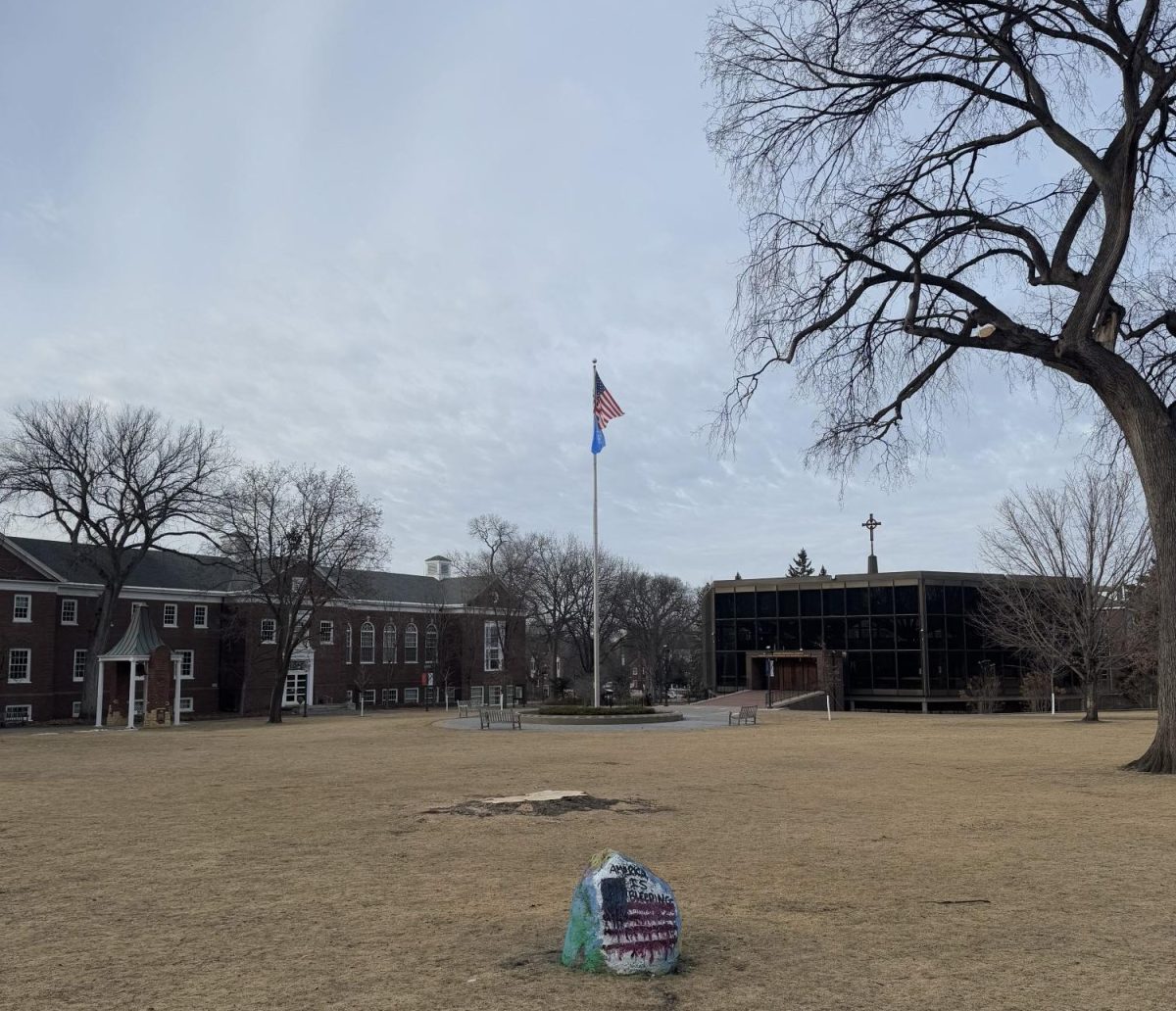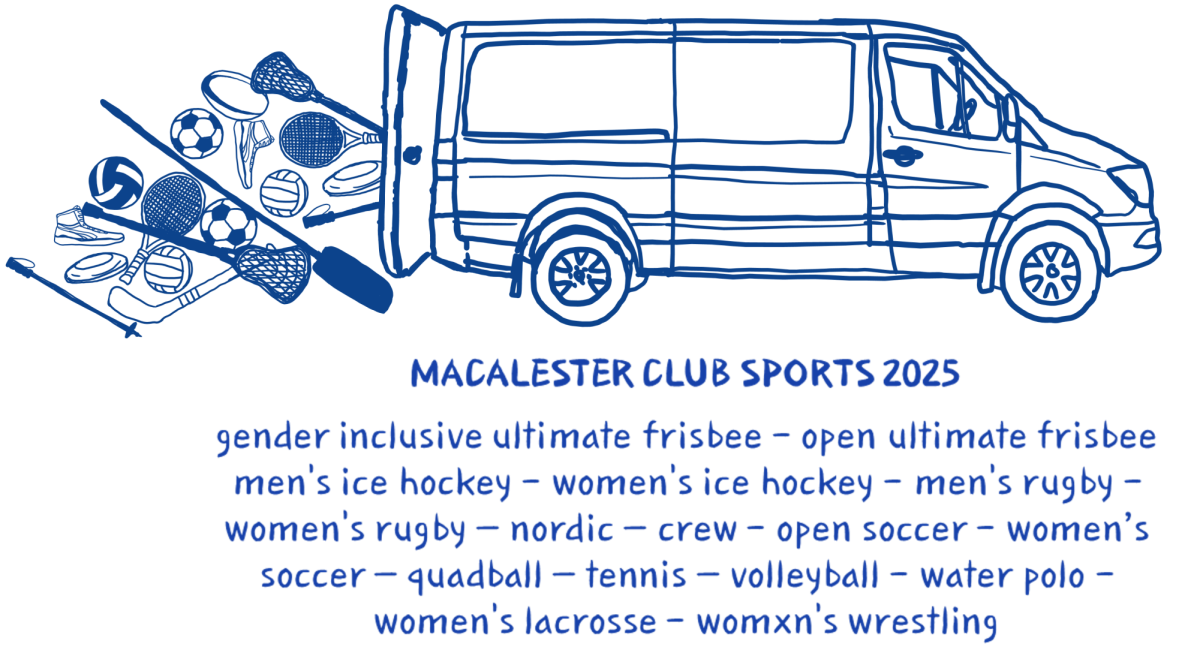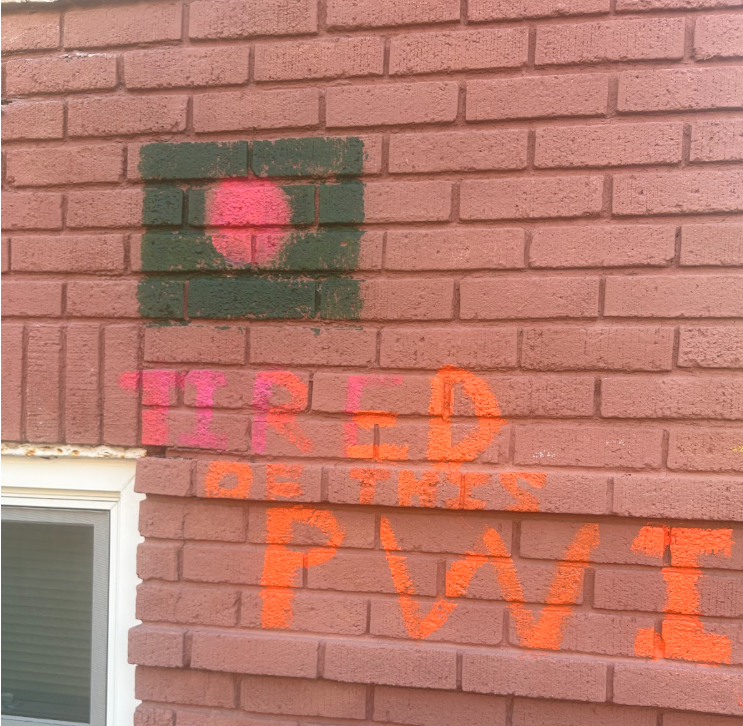‘The quad’ is a staple of the college experience, front and center on almost every campus. The Great Lawn, for instance, serves as common ground for students, faculty and staff to gather as one Macalester community. Our community’s attention has been especially focused on this space following the recent felling of the large silver maple tree central to the Lawn. Facilities shared in a recent Mac Daily that they and Macalester’s arborist agreed that “despite numerous treatments and regular pruning,” the maple “was old and not thriving anymore, and […] became a safety concern.”
As an environmentally-conscious student, an environmental studies major and an avid enthusiast for wilderness and getting outdoors, the remaining stump of the silver maple inspires other ideas of great change for our campus greenspace. While a de facto symbol of community at Mac, The Great Lawn also represents something more sinister that Macalester can, and should, bring an end to: a system of landscaping at odds with Macalester’s values, reliant on anti-environmental practices and connected to a history of oppression.
Lawn keeping originated in 17th-century European estates as a sign of luxury exclusive to the wealthy. With European colonization of America, shortly-scythed lawns remained an elitist show of status, with the estates of powerful men (for instance, President George Washington’s Mount Vernon) featuring sprawling, well-kept greens. However, estate owners like President Washington usually weren’t the ones performing the arduous, meticulous labor of lawn maintenance in an era before the mower: the people they enslaved were.
The racist underbelly of American lawns didn’t fade away even as grand estates fell out of fashion. As American suburbia began to sprawl across the national landscape in the early 20th century, keeping a pristine lawn became tied to the ideals of the American Dream. However, these ideals were never meant for every American, and common practices of redlining and racial clauses in housing covenants throughout this era ensured that suburbia, flagship lawns and all, was a decidedly white space. This is cruelly ironic, considering that lawns have often been designed (in public parks, neighborhood boulevards and, yes, college quads) with community in mind. Given Macalester’s stated commitment to “lean into conversations around equity and social justice,” the College must question its lawn keeping in light of this explicitly racist history.
Additionally, the unsustainable practices necessary for lawn care clash with Mac’s environmental values. Today, 40 million acres of American land are used to maintain turf grasses, an area nearly the size of my home state, Wisconsin. This makes lawn grasses the most irrigated crop in the country, an enormous expense as droughts become more frequent and wildfires grow more and more destructive in the U.S. To maintain these 40 million acres of (purely decorative) grass, we use 800 million gallons of gas to fuel our lawn equipment (with another 17 million gallons spilled in the process).
Mac’s lawns are part of this problem. On any given day, from anywhere on campus, most of the green space surrounding you will be lawn. This includes not only central areas like the Great Lawn and Shaw Field but also many nooks and crannies with little day-to-day use, such as between the Ruth Stricker Dayton Campus Center and Kirk Hall. Considering that Mac has taken significant steps to improve on-campus sustainability and green energy efforts in recent decades, the proliferation of lawns is pretty strange. Green roofs, community gardens and pollinator-friendly landscaping are, like the lawns, easily found dotted across campus. Mac Facilities has already opted towards some promising measures to try and make its lawn care more sustainable, such as cutting grass at a greater height and keeping mower blades sharpened. However, these initiatives still require the status quo of gas-powered equipment keeping colonial-era lawns.
Thankfully, there are other options. Mac can not only help reduce the amount of gasoline burned annually but also increase campus biodiversity and drought tolerance, reduce soil erosion and runoff, as well as save costs in equipment, fuel and labor by simply not mowing one of these areas. I highlight the Great Lawn specifically because of its centrality on campus, both in student use and Mac’s marketing. Imagine those lovely images of Old Main strewn across Mac’s website and promotional mail with a luscious prairie in the foreground. Mac has a bold opportunity to continue its legacy as a global leader of on-campus sustainability initiatives with a front-and-center, unapologetic and unmowed rejection of colonialism and unsustainable land management. Additionally, any activities requiring a lawn, such as athletics, outdoor games or large student gatherings could simply relocate to/remain on one of the many other vast lawns on campus, such as the John Leaney or Shaw Fields.
There are countless possibilities ripe for student input, and the change would be perfectly timed with the ongoing implementation of the Comprehensive Campus Plan. Perhaps the Lawn could be an unmanaged, totally wild greenspace ready for student exploration and desire-paving, or a sprawling, low-maintenance wildflower and native plant garden. To offer Macalester some flexibility, these changes could last just for a year, or even a semester, as a trial run. Grass grows quickly, and the community could observe and comment on the lawn’s new look (or perhaps a few different options) with a short window of commitment from Facilities Services. Compared to past student-led campus sustainability initiatives, this requires little effort and is very achievable.
The possibilities are endless and would provide all of us an opportunity to collaborate on a more sustainable center of our college. Letting the Great Lawn grow its hair out, so to speak, could show new heights of Mac’s sustainability efforts and defy a landscaping legacy built on inequality.







